#si thep
Explore tagged Tumblr posts
Text
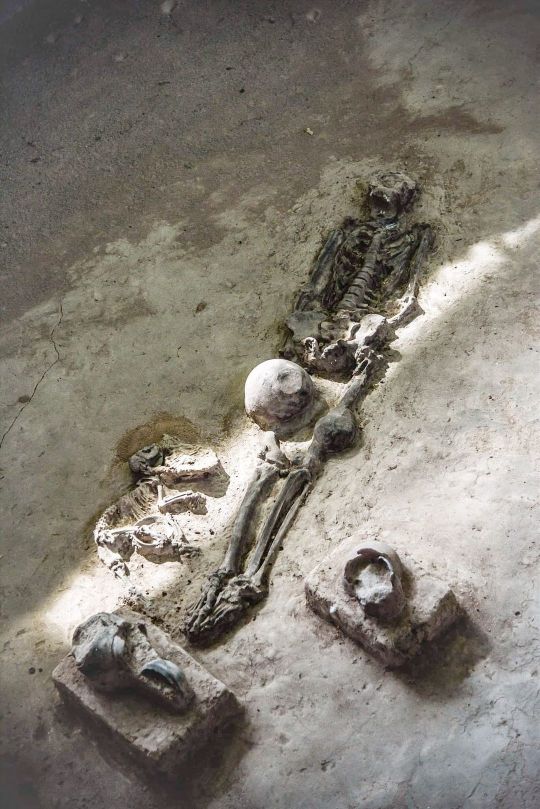
Ancient human female skeletons dated more than 2,000 years old from the "Dvaravati Empire, Si Thep city" (located in Thailand) were unearthed along with her personal possessions and a companion dog. "Dvaravati Empire" was the Mother of all civilisation (with influences from India) in mainland southeast Asia that thrived in Central Thailand from the 6th to the 10th centuries (pre-Angkor wat). "Si Thep" was officially added to UNESCO's world heritage list on September 19, 2023, more than one hundred years since it was discovered.
#ancient history#prehistoric#ancient civilization#archaeology#southeast asia#dvaravati empire#dvaravati#si thep#world heritage
62 notes
·
View notes
Text
[Talk] The ancient town of Si Thep in Thailand: A crossroads of Indianization
Readers in the London may be interested in this talk by Dr Nicolas Revire at SOAS on the newly-minted Unesco World Heritage Site of Si Thep.
Readers in the London may be interested in this talk by Dr Nicolas Revire at SOAS on the newly-minted Unesco World Heritage Site of Si Thep. The ancient town of Si Thep, located in the western margin of the Khorat Plateau in northeast Thailand, stands as one of the largest and most enigmatic sites in mainland Southeast Asia, flourishing between the mid-to-late first millennium CE and around the…
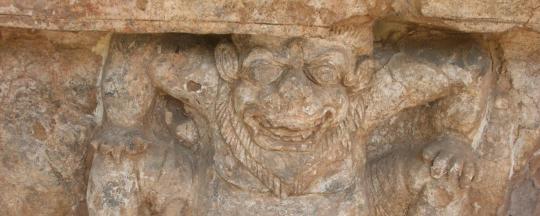
View On WordPress
#Indianization#London (city)#Nicolas Revire (person)#Si Thep Historical Park#SOAS#talks / presentations#Unesco World Heritage
0 notes
Text




🎊 The ancient town of Si Thep at the south corner of Phetchabun province is now Thailand’s latest addition to its UNESCO World Heritage Site collection. This archaeological gem showcases a complete form of prehistoric civilization dating back more than 1,700 years. For more information, visit www.tourismthailand.org/Articles/10-things-to-do-in-phetchabun.
#AmazingThailand
8 notes
·
View notes
Text
Great 'treasure' discovered in Thailand! Want to know why efforts are being made? ruins are explored
Great ‘treasure’ discovered in Thailand! Want to know why efforts are being made? ruins are exploredExcavations are underway in the city of Si Thep in Thailand. This place is located 200 kilometers from the Thai capital Bangkok. Tanachaya, 33, is carefully excavating the old structure. Thailand News: Thailand is struggling to get back all its cultural properties taken away during foreign looting.…
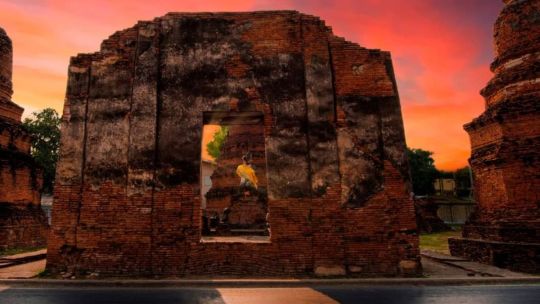
View On WordPress
#Asia Hindi News#discovered#efforts#explored#Great#Great treasure is discovered in Thailand Know why efforts are being made ruins are being explored#ruins#thailand#thailand cultural heritage#thailand news#treasure
2 notes
·
View notes
Text
【タイ】世界遺産「古代都市シーテープとドヴァ―ラヴァティー遺跡群」
【世界遺産 タイ/古代都市シーテープとドヴァ―ラヴァティー遺跡群】ナゾの王国に栄えた古代都市 2024/9/29放送 208, Si Thep, Si Thep District, Phetchabun 67170 タイ #世界遺産 詳しく見る↓
シーテープ歴史公園 タイ北部のペッチャブーン県に位置する「古代都市シーテープとドヴァーラヴァティー遺跡群」は、 2023年にユネスコの世界文化遺産に登録されたばかりの神秘的な遺跡 6世紀から13世紀にかけて栄えたドヴァーラヴァティー王国の中心地であり、 ミャンマー文化の影響を強く受けながら独自の文化を花開かせた都市として知られている。 シーテープは、単なる遺跡群ではなく、当時の社会構造や信仰、芸術、そして人々の暮らしを垣間見ることができる貴重な歴史の証人 特に、仏教とヒンドゥー教が融合した独自の宗教観が特徴で、数々の精巧な仏像や寺院遺跡からは、当時の信仰��の深さが伝わってくる。 また、高度な都市計画に基づいて建設された城壁や濠、そして複雑な水路システムなどは、当時の技術力の高さを物語っている。 発掘調査は現在も進行中で、新たな発見が次々と報告されている。 未解明な謎も多く残されており、…
0 notes
Text
WIN99
เข้าร่วม WIN99 ��ระเทศไทยเพื่อรับข้อเสนอต้อนรับพิเศษ! รับเครดิตฟรี 188 บาท ได้เข้าถึงเกมเว็บและมือถือหลากหลาย และสัมผัสประสบการณ์ความสนุกไร้ขีดจำกัด ลงทะเบียนเดี๋ยวนี้! website: https://win99-thai.quest/ address: 199 Si Phraya Rd, Khwaeng Si Phraya, Khet Bang Rak, Krung Thep Maha Nakhon 10500, Thailand hastags: #WIN99 #WIN99thaiquest #WIN99slot #WIN99casino
1 note
·
View note
Text

2023 : La ville ancienne de Si Thep et ses monuments de Dvaravati associés. Thaïlande
Il s’agit d’un bien en série composé de trois éléments constitutifs : un site caractéristique de villes jumelles, qui comprend une ville intérieure et une ville extérieure entourées de douves ; le monument ancien massif de Khao Klang Nok ; et le monument ancien de la grotte de Khao Thamorrat. Ensemble, ces sites représentent l’architecture, les traditions artistiques et la diversité religieuse de l’empire de Dvaravati qui s’épanouit du VIe au Xe siècle, témoignant des influences de l’Inde. L’adaptation locale de ces traditions fut à l’origine d’une nouvelle tradition artistique dénommée l’école d’art de Si Thep, qui influença par la suite d’autres civilisations d’Asie du Sud-Est.
0 notes
Text
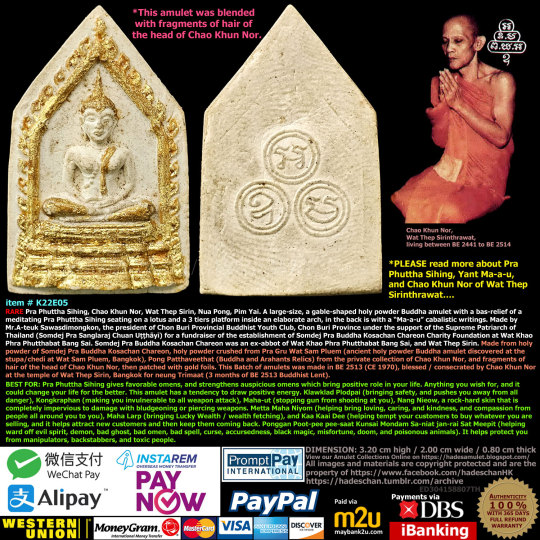
item # K22E05
RARE Pra Phuttha Sihing, Chao Khun Nor, Wat Thep Sirin, Nua Pong, Pim Yai. A large-size, a gable-shaped holy powder Buddha amulet with a bas-relief of a meditating Pra Phuttha Sihing seating on a lotus and a 3 tiers platform inside an elaborate arch, in the back is with a “Ma-a-u” cabalistic writings. Made by Mr.A-teuk Sawasdimongkon, the president of Chon Buri Provincial Buddhist Youth Club, Chon Buri Province under the support of the Supreme Patriarch of Thailand (Somdej Pra Sanglaraj Chuan Uṭṭhāyī) for a fundraiser of the establishment of Somdej Pra Buddha Kosachan Chareon Charity Foundation at Wat Khao Phra Phutthabat Bang Sai. Somdej Pra Buddha Kosachan Chareon was an ex-abbot of Wat Khao Phra Phutthabat Bang Sai, and Wat Thep Sirin. Made from holy powder of Somdej Pra Buddha Kosachan Chareon, holy powder crushed from Pra Gru Wat Sam Pluem (ancient holy powder Buddha amulet discovered at the stupa/chedi at Wat Sam Pluem, Bangkok), Pong Patthaveethat (Buddha and Arahants Relics) from the private collection of Chao Khun Nor, and fragments of hair of the head of Chao Khun Nor, then patched with gold foils. This Batch of amulets was made in BE 2513 (CE 1970), blessed / consecrated by Chao Khun Nor at the temple of Wat Thep Sirin, Bangkok for neung Trimaat (3 months of BE 2513 Buddhist Lent).
……………………………………………………..
BEST FOR: Pra Phuttha Sihing gives favorable omens, and strengthens auspicious omens which bring positive role in your life. Anything you wish for, and it could change your life for the better. This amulet has a tendency to draw positive energy. Klawklad Plodpai (bringing safety, and pushes you away from all danger), Kongkraphan (making you invulnerable to all weapon attack), Maha-ut (stopping gun from shooting at you), Nang Nieow, a rock-hard skin that is completely impervious to damage with bludgeoning or piercing weapons. Metta Maha Niyom (helping bring loving, caring, and kindness, and compassion from people all around you to you), Maha Larp (bringing Lucky Wealth / wealth fetching), and Kaa Kaai Dee (helping tempt your customers to buy whatever you are selling, and it helps attract new customers and then keep them coming back. Ponggan Poot-pee pee-saat Kunsai Mondam Sa-niat jan-rai Sat Meepit (helping ward off evil spirit, demon, bad ghost, bad omen, bad spell, curse, accursedness, black magic, misfortune, doom, and poisonous animals). It helps protect you from manipulators, backstabbers, and toxic people.
……………………………………………………..
Pra Phuttha Sihing
The Pra Phuttha Sihing is a highly revered image of the Gautama Buddha in Bangkok, Thailand, second in importance only after the Emerald Buddha. The image is currently housed at the Phutthaisawan Hall (formerly a part of the Front Palace), now the Bangkok National Museum. The image was brought to Bangkok from Wat Phra Singh, Chiang Mai in 1795 by Viceroy Maha Sura Singhanat, the brother of King Rama I.
History
The exact provenance of the Pra Phuttha Sihing image is still in question. The name Sihing comes from Sinhala the name of several kingdoms in Sri Lanka. According to legend the Pra Phuttha Sihing image was created in Sri Lanka around 157 A.D. and was brought to Thailand in 1307 to Sukhothai. Later it was relocated to Phitsanulok, Ayutthaya in 1378, Kamphaeng Phet in 1382 and Chiang Rai in 1388, before it was brought back to Ayutthaya again and then back to Chiang Mai in 1407, where it was enshrined at Wat Pra Singh.When King Narai conquered Chiang Mai in 1662, he brought the Buddha image back to Ayutthaya, where it was enshrined for 105 years at Wat Pra Si Sanphet until the Fall of Ayutthaya in 1767, following which, the people of Chiang Mai brought the Buddha Sihing image back to Chiang Mai.
In 1795 the image was taken from Chiang Mai by King Rama I and his brother the Viceroy Maha Sura Singhanat to Bangkok, as war booty.[4] At first the image was enshrined at the Front Palace of the Viceroy, after his death in 1803 the image was moved to the Wat Phra Kaew in the Grand Palace by Rama I. It remained there until 1851, when King Mongkut raised his younger brother Prince Chutamani to the unprecedented rank of Second King Pinklao. In order to celebrate the newly elevated status of Pinklao, King Mongkut gave the Second King the Pra Phuttha Sihing image. Considered the second most important Buddha image after the Emerald Buddha. The image was then taken back to the Front Palace (now the palace of Pinklao), where it was housed in the Phutthaisawan Hall, where it remains today.
Apart from the aforementioned image in Bangkok, at least two other images in Thailand are identified with the Pra Phutta Sihing. One at Hor Prabhut Sihing, Nakhon Si Thammarat and the other at Wat Pra Singh, Chiang Mai.
……………………………………………………..
Yant Ma-a-u
The Ma-a-u Cabalistic Writings means “I take refuge in the Buddha, Dharma, and Buddhist Monk”, also refers to the Three Jewels, Triple Gem, or Three Refuges are the supports in which a Buddhist takes refuge by means of a prayer or recitation at everyday life.
These Three Jewels are:
The Buddha, the fully enlightened one
The Dharma, the teachings expounded by the Buddha
The Buddhist Monk, the monks who practice the Dharma.
……………………………………………………..
CHAO KHUN NOR OF WAT THEP SIRINTHRAWAT
Chao Khun Norrarath Rachamanit (Chao Khun Nor) was born on Saturday, 5th Febuary BE2440 and was the eldest of the family of 5 children. He was in the first group of students of the 1st Official University of Kingdom Siam, later known as Chulalongkorn University. After completing his studies, Chao Khun Nor became an officer of the Royal House of King Rama VI. He became the closest attendant to the King and he was promoted to serve at the King’s chamber and attended to the King’s daily needs. After the death of the King Rama VI, Chao Khun Nor was devastated. He left the palace in BE 2468.
His parents wanted him to get married with a lady teacher after seeing Chao Khun Nor was in lament over the death of the King. However, before the marriage would be engaged, Chao Khun Nor told his parents that he wanted to enter monkshood.
Chao Khun Nor ordained on 23th March BE 2468 at Wat Thepsirintravas, a day before King Rama VI was cremated. He became a monk as thamboon (making a merit) for the King Rama VI. Chao Khun Nor was a devoted vegetarian who consumed only a meal a day and decided never to leave the monkshood. He was ordained by Somdej Phra Buddha Ko-sacharn (Charoen), who was also his preceptor. Phra Putwiriyaaigon, the abbot of Wat Sommanatwiharn and Phra Udon Seelahkon Wat Thepsirin were the Dhamma teachers.
STRICT OBSERVANCE OF THE 227 PRECEPTS
It is widely believed that Chao Khun Nor could accurately predict the future by looking at finger and palm prints. When the villagers heard of that ability, all of them flocked to the temple asking him to tell them their future but they were declined by Chao Khun Nor. Despite that, many people continued to visit Chao Khun Nor very often even though they know that they will most probably go back empty handed. They all came for an assortment of reasons ranging from offering presents, to seek a guidance about their problems and to ask Chao Khun Nor about their future lives. Chao Khun Nor was very uncomfortable, pity and sad with all these human beings.
When the villagers offered things to Chao Khun Nor, Chao Khun Nor advised them to bring those to other monks as he strictly observed the 227 provisions of moral precepts. Chao Khun Nor also mentioned that one would similarly accumulate merits when giving offerings to other monks. This made the villagers unhappy and felt that Chao Khun Nor looked down on them. They people brought the matter up to Somdej Phra Buddha Kosacharn (Charoen).
When Somdej Phra Buddha Kosacharn heard this, he asked Chao Khun Nor about this matter. Chao Khun Nor explained that the reason he did not accept the offerings or attendance from the villagers because he was ordained for the purpose of making a merit to King Rama VI. Besides that, he also needed to maintain good concentration in order to study the teachings of Buddhism. In order to succeed, he needed to have no connections to the outside world. All the people who came to visit him brought along the troubles of the world, which adversely affected his concentration. When Somdej Phra Buddha Kosacharn heard his reason, he sympathized and agreed with him.
Chao Khun Nor had strictly observed the 227 precepts, he did not accept any form of offerings from the villagers. The room in which he lived was very empty and consisted of only the basic necessities. There was even no electric lighting. Chao Khun Nor did all his readings in the daytime. When Chao Khun Nor went back to his room, he would lock the door and stay inside. No one ever knew what he did in his room and he never came out to receive guests. He never accepted anything from anyone with the exception of his nephew who would bring vegetarian food from his mother. Chao Khun Nor spent most of his time in his monk’s house.
At the temple, they placed some skeletons of dead people to aid the monks in the development of their insight. The intention was to remind the monks that the female body would eventually resemble this ugly state so that they will refrain from sex and impure thoughts as well as to reinforce the rule of impermanence. LP Parn of Wat Bang Nom Kho Ayutthaya also practiced in such a manner.
WATER AFTER WASHING CHAO KHUN NOR’S FEET COULD CURE SICKNESS
It is a daily routine for Chao Khun Nor to walk back to the monk’s house. There were 2 things that were significantly different with him. Firstly, he did not wear any slippers like the villagers and walked around barefeet. The second and most remarkable was that he always walked on tip-toes and his heels never touched the ground. No one knows why he walked like that but it was assumed that it was a kind exercise for his leg muscles. Before stepping into the monk’s house, he would wash his feet in a basin and dry them.
A village was hit by a deadly disease and one of the villagers was instructed to bring an empty bottle to Chao Khun Nor to ask for some holy water to try to cure his fellow villagers but was declined. The villager had no idea what to do and how to get holy water from CKN to appease the villagers. Out of desperation, he decided to take water from the basin used for washing Chao Khun Nor’s feet and brought it back to his place to give to the sick. Nobody knew the origins of the water and what it was used for. After those sick people drank the water which they thought was holy water given by Chao Khun Nor, all of them were miraculously cured. This greatly puzzled the man who brought back that water to the village.
When this rumor spread out, people who heard it, then all rushed towards Wat Thepsirin to ask Chao Khun Nor for this special holy water but he denied having given any to anyone much to their disappointment. When the villagers heard Chao Khun Nor’s reply, they were all very confused as to where the holy water came from.
The monk staying next to Chao Khun Nor couldn’t stand it anymore as more and more people flocked to the temple and decided to clarify to the villagers once and for all that Chao Khun Nor had never given any holy water to anyone. However, there was one man who came to beg for it but was declined. He also witnessed the same man taking the water from Chao Khun Nor’s feet washing basin but at that time, he did not know what the man was doing.
When the origins of the “holy water” was established, all the villages rushed to take water from the basin. Some waited around for it to be filled up and immediately emptied the basin. This made it a very hectic job for the person responsible for topping up the basin as he had to do it numerous times a day. Finally, the basin was placed in Chao Khun Nor’s room to stop all trouble.
MIRACLE AT THE AMULETS BLESSING CEREMONIES
There were reports of strange incidents happening when Chao Khun Nor made incantations. On the fateful day of Saturday, 25th April BE2513, a photographer was assigned to take photographs of him consecrating a batch of amulets and was busy snapping pictures of the long and elaborate process until it was finished. After the photographs were developed, there was something strange and remarkable about a picture in which Chao Khun Nor was sprinkling holy water on the amulets. The wooden brush that was used to sprinkle holy water emitted white light from its tip. There were many people who were present at the ceremony but the light was not seen by anyone there. It only showed up on the picture. Everyone was amazed as they could not find any logical explanation for this. However, everyone agreed that it could not have been caused by the actual physical sprinkling of holy water itself.
There was another strange incident on Saturday, 5th December BE 2513. There was a big ceremony at Wat Thepsirin and many people came to witness the event. Chao Khun Nor announced that it was going to be the last time he was going to make incantations for the blessing of amulets. In a photograph, the flames from the candles which were lined up directly in front of the principle Buddha statue were “swaying” as if there was a strong wind blowing. However, all the windows and doors were shut during that time and there was no wind at all. The flames should have been completely still. Everyone who was at the ceremony were astonished when the picture was shown. This particular picture was taken when Chao Khun Nor was making incantations in front of the principal Buddha image in a temple and Chao Khun Udomsarasophon was blessing the amulets with holy water.
Based on the pictorial evidence taken during the ceremony, there was widespread belief that the strange incidents were the result that Chao Khun Nor was already an arhat.
……………………………………………………..
DIMENSION: 3.20 cm high / 2.00 cm wide / 0.80 cm thick
.…………………………………………………….
item # K22E05
Price: price upon request, pls PM and/or email us [email protected]
100% GENUINE WITH 365 DAYS FULL REFUND WARRANTY
Item location: Hong Kong, SAR
Ships to: Worldwide
Delivery: Estimated 7 days handling time after receipt of cleared payment. Please allow additional time if international delivery is subject to customs processing.
Shipping: FREE Thailandpost International registered mail. International items may be subject to customs processing and additional charges.
Payments: PayPal / Western Union / MoneyGram /maybank2u.com / DBS iBanking / Wechat Pay / Alipay / INSTAREM / PromptPay International / Remitly / PAYNOW
****************************************
0 notes
Text
THAO THEP KRASATTRI & THAO SI SUNTHON // NATIONAL HEROINE
“They are Thai national heroines who were known for their important roles in successfully repelling the Burmese Invasion of Thalang in 1786. During the Burmese-Siamese War of 1785-1786, the governor of Thalang died in Dec 1785 and thus Lady Chan, her sister Lady Muk, her son Thien and her cousin Thongpun organised the local defence against the Burmese invasion. They relied on their heavy canons and after a month of continuous fighting the Burmese finally retreated in March 1786. For this, King Rama I rewarded Lady Chan and Lady Muk with the honorific title of Thao.”

0 notes
Text
Preserve and Protect: Challenges and Opportunities of Si Thep's Khao Klang Nok UNESCO Listing
The recent designation of Si Thep’s Khao Klang Nok monument as a UNESCO World Heritage Site has brought tremendous attention to this ancient town, located 150 miles north of Bangkok. While the recognition has breathed new life into this historical park, it has also presented challenges that require careful consideration to ensure the preservation and sustainable development of this cultural…

View On WordPress
0 notes
Text

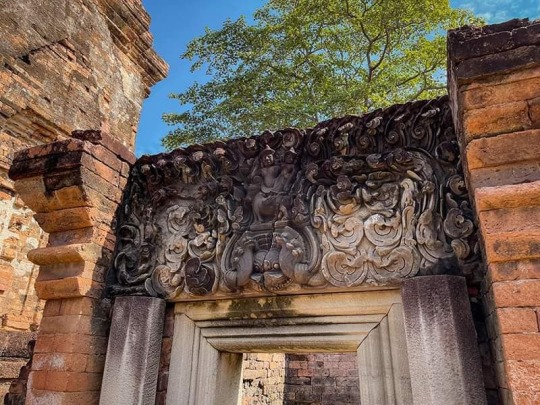

Introducing the "Dvaravati Empire", the Mother of all civilisation (with influences from India) in mainland southeast Asia that thrived in Central Thailand from the 6th to the 10th centuries (pre-Angkor Wat). At its peak, the town was a thriving cultural and trading metropolis that celebrated Hindu and Buddhist beliefs. "Si Thep" was officially added to UNESCO's world heritage list on September 19, 2023, more than one hundred years since it was discovered.
45 notes
·
View notes
Text
Sacred Summit: Khao Thamorrat's Ancient Worship Unveiled
Discover Khao Thamorrat: A sacred mountain near Sri Thep, home to ancient Buddhist sculptures and a testament to enduring faith.
via Thai PBS, 30 January 2024: Khao Thamorrat, a mountain near Si Thep in Phetchabun province, Thailand, holds a significant place in history as a sacred site and natural landmark. The mountain, accessible by a steep trail, features a cave with ancient Buddhist sculptures and active stalagmites and stalactites. Despite the challenges of the climb, locals and visitors continue to make the…

View On WordPress
0 notes
Text

😋 To celebrate the occasion that Si Thep Ancient City has been inducted into the UNESCO World Heritage Hall of Fame, the historical park is now offering these special edition ‘Prehistoric Popsicles’ until September 24. Be cool and don’t miss it.
Photo courtesy
#AmazingThailand
4 notes
·
View notes
Link
Thailand’s ancient town of Si Thep added to world heritage list – The Lifestyle Insider
0 notes
Text
HÀNG RÀO LƯỚI THÉP GIÁ SỈ TẠI TPHCM
Trong ngành xây dựng, hàng rào lưới thép được xem là một giải pháp hiệu quả, đáp ứng nhu cầu an ninh và bảo vệ tại các khu vực công cộng và tư nhân. Và để đáp ứng nhu cầu ngày càng tăng về hàng rào lưới thép giá sỉ, công ty Lưới thép N&T đã cung cấp đa dạng mẫu mã và kích thước, đảm bảo chất lượng và uy tín, giá thành hợp lý.
https://luoithephan.com.vn/hang-rao-luoi-thep-gia-si-tai-tphcm.html
0 notes
Text
(Sub Thai) The greatness of the Thai people "Si Thep " 1,700 years old
youtube
1 note
·
View note